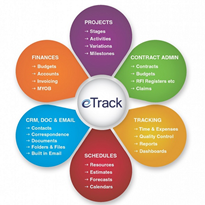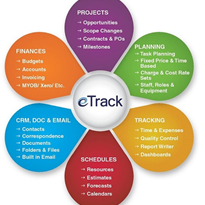Rule 1: You must provide Full Management Support to the Implementation
Senior Managers are accountable for providing full support to the new systems implementation and use. Management cannot just pay lip service their staff must know that they are VERY serious about the success of the project.
Rule 2: Have a System champion
Even when people know that change is necessary and/or good for them, they will often resist to some degree. Every successful new system implementation must include a concerted effort to get employees to buy in to the new system and a system champion can help you achieve that employee buy-in or someone who lays down the law with respect to the implementation process.
Start by expecting some resistance to occur, and then seek to understand the reasons. For example, some people — may resist simply because it feels more comfortable doing things the old way. Others may feel the current system is working fine.
A few may consider a new system an invasion and resist out of fear. The more you know about why people are resisting the change, the better you can address their issues and improve your chances of a successful implementation.
Rule 3: Get Employee Buy-In
Hold people accountable for learning the system and using it. If you pay lip service to the initiative but fail to follow through, people will quickly assume that you are not serious.
To make the change more attractive to employees and encourage their buy in:
Communicate. Explain how the new system will make their jobs easier and how the company will benefit as a whole. At the same time, point out how difficult it will be for your company to remain competitive without it.
Demonstrate commitment and support. When staff members see that management is fully behind the initiative, they are more inclined to support it.
Insist that people take ownership of the process. Tell employees, “We’re depending on you to learn this because we’re going to come to you with our questions.”
Assign tasks and responsibilities. Resistance is often due to a fear of the unknown, but when people know what is expected of them and what they are responsible for, they will embrace the change and move forward.
Rule 4: Written Plans
The forth most important factor in a successful implementation involves having a written plan.
Why is a written plan so important?
Because it removes much of the ambiguity from the process, establishes deadlines for achieving key milestones, and provides a tool for ensuring that all individuals and departments stay on track. In addition, a written plan serves as both a guidepost and a guiding force behind the implementation. An effective system implementation plan can be done in spreadsheet format in one or two pages.
The written should:
- Identify all technical issues
- Include all goals and objectives
- Assign specific tasks and responsibilities to individuals and departments
- Set deadlines for important milestones such as data conversion, training schedules and data testing
- Establish a firm “go live” date
Most companies demand status and progress reports against the plan. In fact, the best implementations insist on receiving staff feedback. These feedbacks typically ask questions related to the general areas of security, menu, help, training and conversion, as well as specific modules such as financials, inventory, CRM, estimating and operations. They provide an excellent tool for measuring how well people are learning and understanding the software during the training phase and for identifying potential bottlenecks in the implementation process.
A good implementation plan has realistic goals and takes into account the various workloads of departments and employees when setting up the implementation timeline.
Overloading people who are already working at full capacity will raise stress levels and resistance to the change. Where possible, schedule training and implementation around work, rather than in place of it.
Finally, keep in mind that no plan — no matter how well written — no implementation unfolds without some adjustments but make sure these are approved. If minor delays occur, stick to the components of the plan as much as possible, but be prepared to tweak the timeline to accommodate circumstances that may arise.
Rule 5: Training Approach
An implementation requires five basic steps:
- Preparation
- System configuration
- Converting the data
- Training/testing and
- Going live.
When it comes to training employees on the new system, a critical question immediately arises: How much training is required for a successful implementation?
As a rule of thumb, you can never have too much training, especially when embarking on a big bang implementation approach. New systems are sophisticated, and people need plenty of time to learn the product, experiment with it and see how it works before actually going live.
Granted, the best applications are intuitive and easy to use, but proper training goes beyond the basic software so that people can utilize all the features and maximize your investment in the software.
There are different types of training:
Vendor-based. Your employees go to the vendor’s site for an intensive basic course in the software. This typically involves the first round of training and generally lasts three to five days.
On-site. The vendor comes to your site to work with specific groups and/or individuals. This training can last one or more days and usually involves some of your own data. Outgoing workers should not have to train their replacements.
Finally, recognize that training should not end with implementation. Bringing in onsite instructors once a year will enable new and existing employees to use the system much more effectively, which enhances your ongoing return on investment.
Rule 6: Train, Train and Train More
Ultimately, the success of any new system implementation and on-going success depends on three critical factors:
- Support from senior management,
- Written plan with clearly defined goals, timelines and responsibilities, and
- Comprehensive training schedules that include vendor-based or onsite training during and after the implementation so that staff continue to take advantage of benefits the new system brings to the business.
If you can follow through on these six rules and you’ve won 95 percent of the battle.
For the remaining five percent:
Choose your priorities. Most companies do 80 percent of their business with 20 percent of their customers, 20 percent of their vendors and 20 percent of their part numbers. If you plan to convert your data a little at a time, start with the 20 percent that will yield 80 percent of your results.
Set a firm “go live” date. People need deadlines to hold them accountable. If you extend the date because people aren’t ready, they will continue to procrastinate. When you set a firm “go live” date and stick to it, people will learn the system.
Avoid the “super user”. Don’t depend on one highly motivated employee to become expert on the software and then teach it to others. This approach ensures a delayed implementation at best and outright failure at worst.
Keep the momentum going. Avoid stops and starts in the implementation process at all costs. Once people get excited about using the system, it’s better to keep the momentum going, even if you only implement a little at a time.
Accept the fact that you will never find a perfect time to implement a new system.
If business is slow, you may not want to spend the money for thorough training. If the business is growing rapidly, employees may feel they don’t have the time to do their regular jobs and take on something new.
The bottom line is that a new system involves a giant step forward to position the company for sustained growth and profitability. Keeping this end goal in mind will make it easier to endure the growing pains that inevitably arise when undertaking an organizational change such as implementing a new system.
























